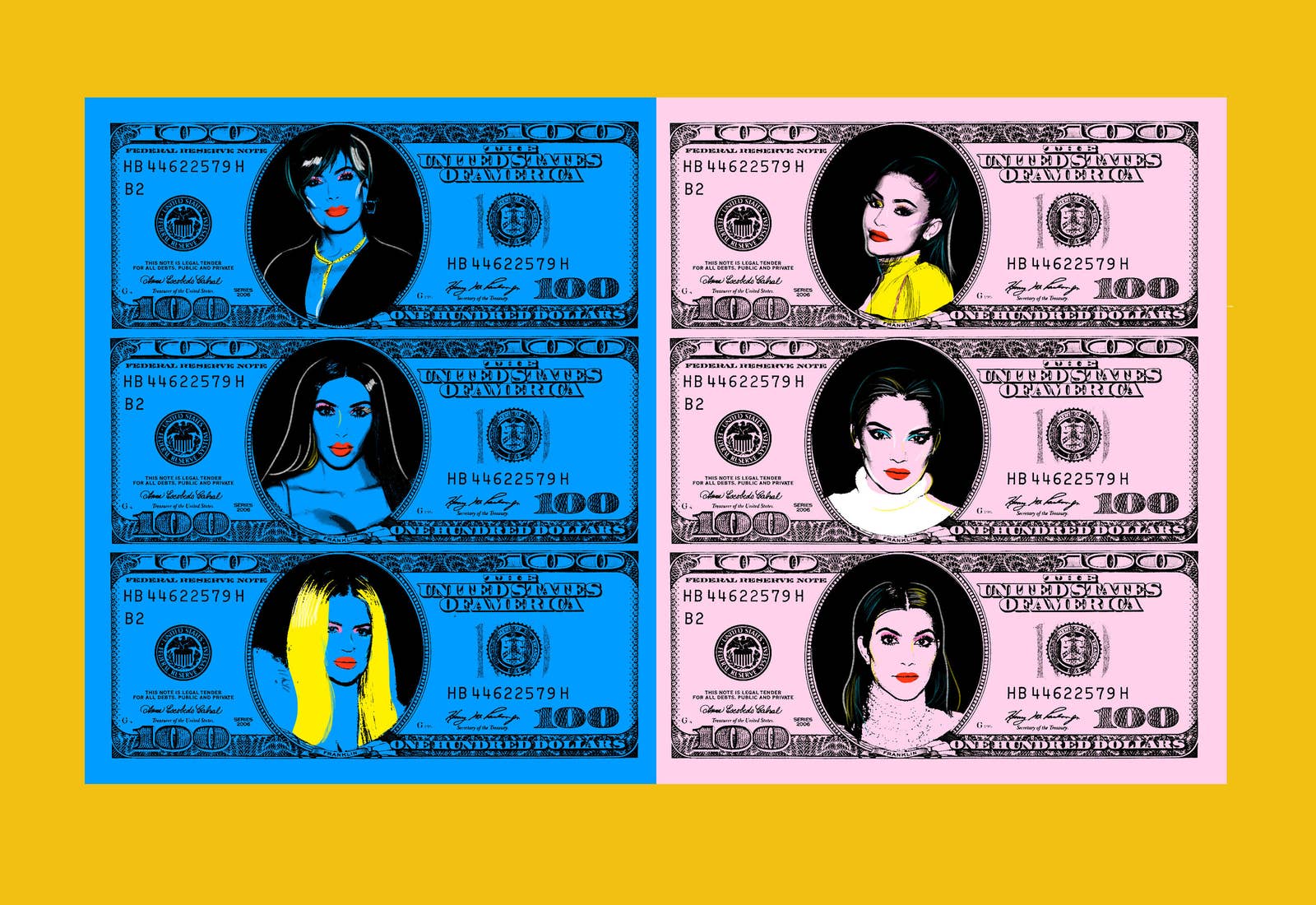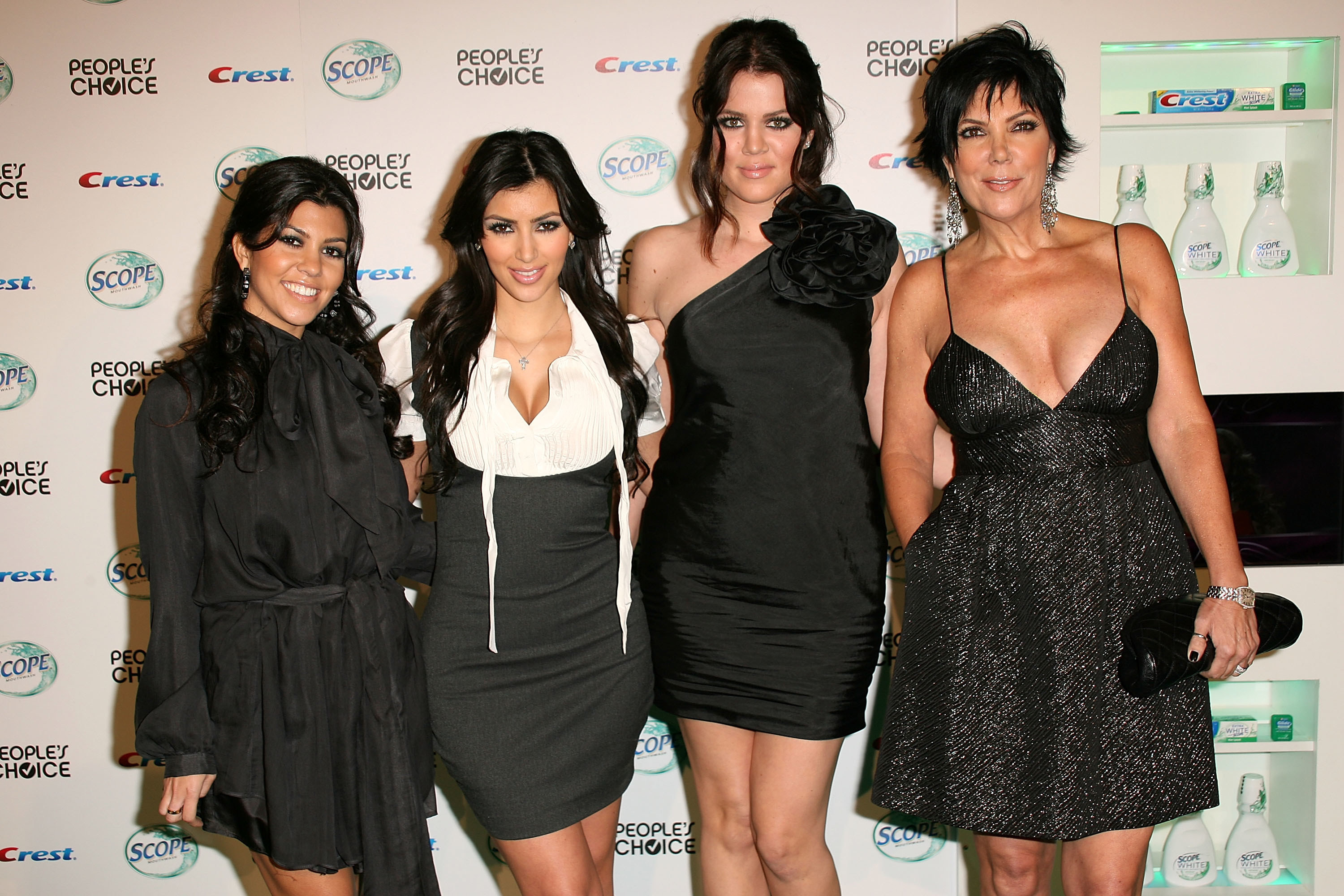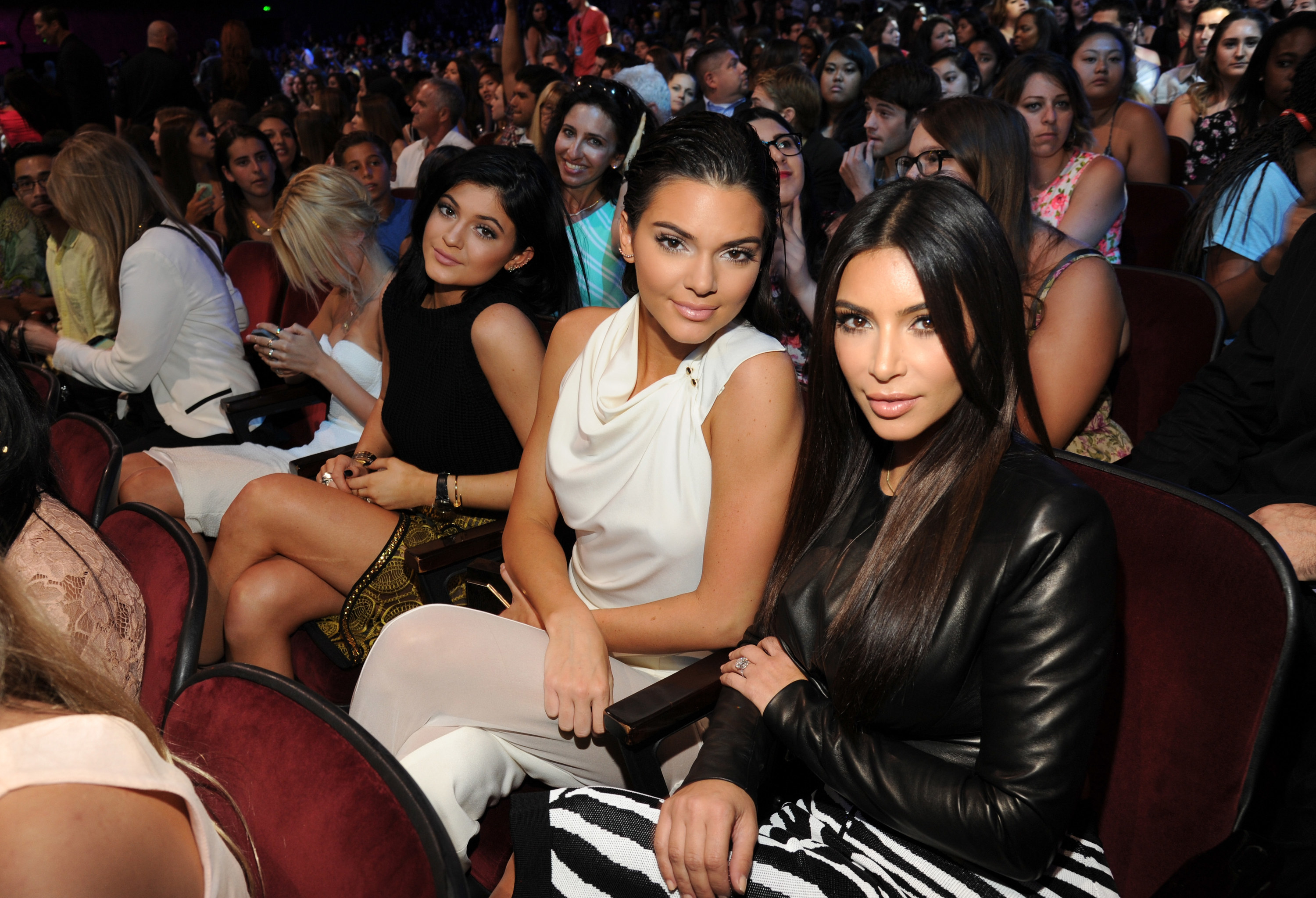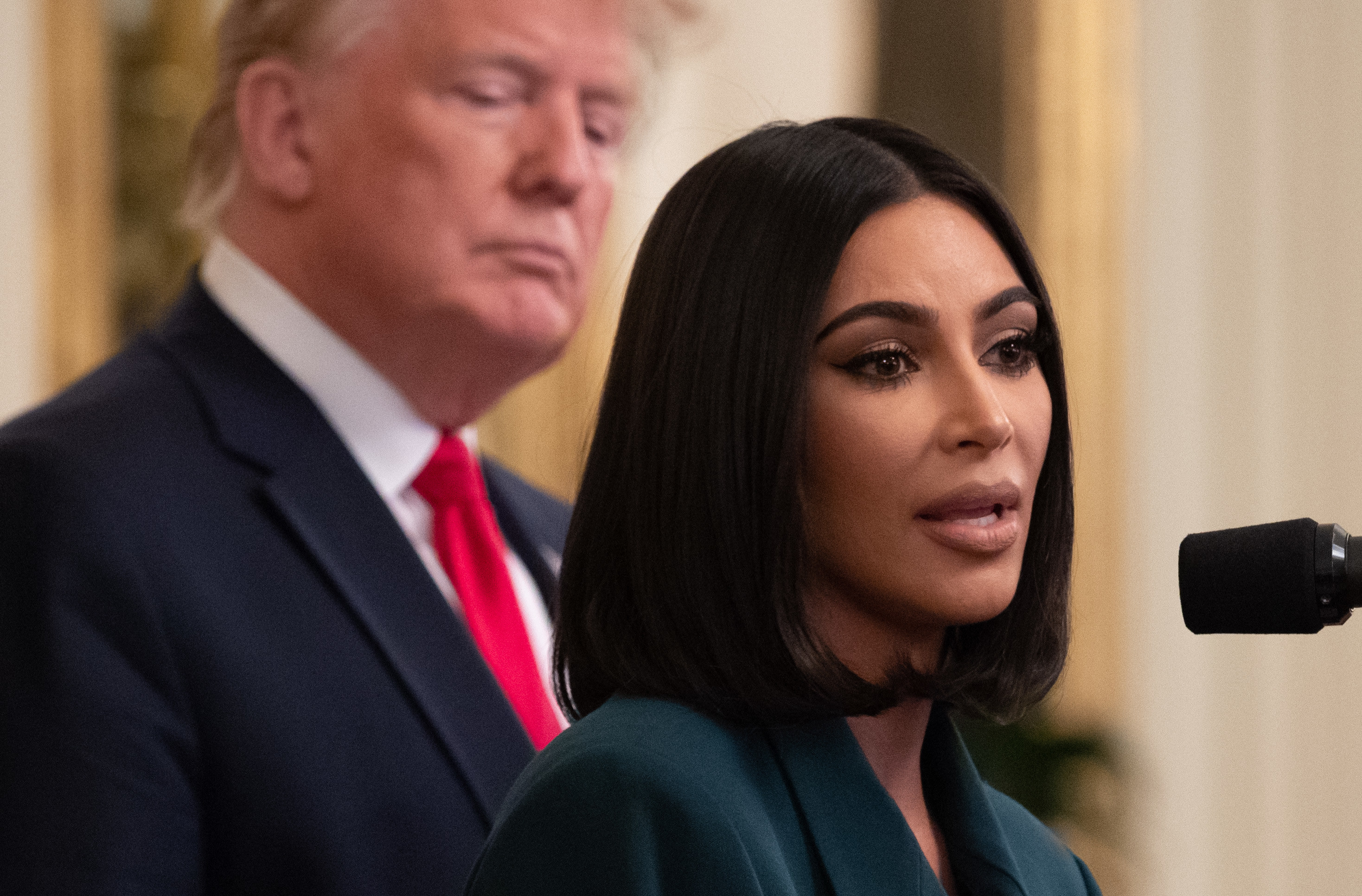
In 2010, Kris Jenner made a bold prediction. When a Los Angeles Times reporter asked her where she thought her family would be in 10 years, she replied, “It’s Keeping Up with the Kardashians Season 24. Kylie” — then 12 years old — “gets married.”
By now, the Kardashians have been an omnipresent cultural force for so long that it’s easy to forget that their place in the firmament used to look much more precarious. But in 2010, KUWTK was only a few seasons old, and there was no precedent for the kind of star the Kardashian sisters were becoming.
The word “influencer” didn’t exist yet; Twitter was still for nerds, and Instagram wouldn’t launch until October of that year. As far as most people were concerned, the Kardashians were destined to be flashes in the reality TV pan, pretty party girls who would fizzle and then fade the way Kim Kardashian West’s one-time boss, Paris Hilton, already had.
Instead, Kris and her children took advantage of the fast-evolving world of social media and personal branding and built a veritable empire, which now includes a billion-dollar makeup company, at least five clothing lines, eight spinoff shows, and nine grandchildren who seem poised to carry the torch — 1-year-old True will apparently soon be starring alongside her mother, Khloé Kardashian, in a show called Khloé and True Take the World. Nine-year-old Mason, Kourtney Kardashian’s oldest, is already doing confessional interviews on KUWTK.
At present, Kris is reportedly negotiating a $300 million deal for the next Keeping Up With the Kardashians contract, doubling the $150 million they received in 2017. So while she got some of the details wrong back in 2010 — next year will bring Season 18, not 24, and Kylie Jenner recently split from Travis Scott, the father of her 1-year-old daughter, Stormi — in all the important ways, Kris was right on the money.
She almost always is. Kris’s instincts have been nothing less than decade-defining: Under her watchful eye and careful management, her daughters have become not just major celebrities, but cultural icons whose influence is felt far from their original spheres.
Nine-year-old Mason, Kourtney Kardashian’s oldest, is already doing confessional interviews on KUWTK.
In the last 10 years, the Kardashians have ruled fashion trends, of course, helping to popularize contouring, lip fillers, waist trainers, and monochrome athleisure. But they’ve also made billions by starting their own companies, and their off-the-cuff tweets have tanked the stock of major corporations. Kim’s successful advocacy around criminal justice reform and American recognition of the Armenian genocide led political reporter Ben Jacobs to call her — not entirely unreasonably — “the most successful policy advocate during the Trump administration so far.”
The story of how the Kardashians went from D-list nobodies to A-list stars who feature regularly on the covers of Vogue and Forbes alike is a remarkable tale of American self-reinvention and self-definition in the digital age. It’s more complicated than you remember and more surprising than you’d expect. A stay-at-home mom, an Olympic athlete decades past her prime, a girl with a big butt and a sex tape, and a gaggle of siblings stepped into the culture and made space for themselves. Not only that, but with the help of evolving technology and their own unerring instincts, they remade parts of culture in their own image. Once written off as little more than a sideshow, these days, the Kardashians are celebrities that no one can afford to underestimate — let alone ignore.

Even before social media created an entirely new class of demi-celebrities, reality television was giving relatively normal people the opportunity to become well-known simply by opening their doors to cameras. MTV’s The Osbournes, which premiered in 2002, introduced us to the genre of reality TV centered on wacky, wealthy families — though its patriarch was obviously already a famous face. Laguna Beach: The Real Orange County took it a step further by focusing on people who were wealthy but not well-known. That show first aired in 2004, followed in 2006 by Bravo’s The Real Housewives of Orange County, which launched the Real Housewives franchise. By the time the pilot of KUWTK aired in 2007, it seemed like the Kardashians were just following an established playbook: carving out their niche and grasping for their 15 minutes on the already overcrowded D-list.
But the Kardashians had an advantage over those other wannabes: They had Kris Jenner. Kris, a born devotee of excess, did not come into the public eye to make friends or feign humility; instead, she said yes to every offer that came her way, rendering the Kardashian name utterly inescapable in the process.
Once written off as little more than a sideshow, these days, the Kardashians are celebrities that no one can afford to underestimate — let alone ignore.
A noncomprehensive list of the things at least one Kardashian endorsed or codesigned between 2007 and 2010: the “Idol White” teeth-whitening pen, an at-home laser hair removal system, Skechers Shape-ups, a clothing line for Bebe, a clothing line for QVC, a clothing line for Sears, a sunless tanner, and Carl’s Jr. Kourtney, Kim, and Khloé also wrote and released a book called Kardashian Konfidential; Kim and Khloé both appeared on various versions of The Apprentice alongside another decade-defining reality TV star. Kim did Dancing With the Stars, released a single and a perfume, and did a surprising amount of very bad acting.
To some extent, this strategy of aggressive market saturation worked. Kris managed to make herself and her children massively famous. She recently recalled requiring more security than the “big stars” at the 2010 Super Bowl in New Orleans: “That was when we knew our lives had changed,” she told the Cut. The Hollywood Reporter wrote a cover story about how the family had earned $65 million that year. There’s no question that the name Kardashian was extremely well-known — and fairly well-compensated.
But then, in 2011, it almost all fell apart. Kim married NBA player Kris Humphries in a televised special called Kim’s Fairytale Wedding: A Kardashian Event, only to divorce him 72 days later. The simmering discontent with the Kardashian brand, and their apparent pursuit of fame and money for fame and money’s sake, rose to a full boil, with some going so far as to start a petition to take KUWTK off the air.
It didn’t work, but even if it had, it probably wouldn’t have mattered. The family would have just done what they pretty much did anyway: broadened their broadcasting to social media channels — Kim joined Instagram in 2012, with the rest of the family quickly following suit — and continued building their fame online. The loss of KUWTK at that point would have been a setback, but not a game changer, since it had already done what it needed to do: put them on the map as people we paid attention to.
But they needed new content in order to convince their audience to follow them to these new platforms and stay loyal once they got there. Enter Kanye West, whom Kim started dating in 2012. Kanye was (arguably) approaching the height of his artistic powers at the time: He’d just put out Watch the Throne with Jay-Z, as well as his solo album My Beautiful Dark Twisted Fantasy, and was already working on Yeezus.
Kanye’s position as an artist transformed the way we understood Kim: Instead of just being a hot girl who couldn’t do anything, she became a hot girl who inspired someone, which is to say, a muse — a familiar figure with a defined and accepted role. Kanye also gave Kim, and by extension her family, more serious cultural legitimacy than they’d previously possessed. He was already a bona fide A-list celebrity when they got together; unlike Reggie Bush or Kris Humphries, Kim’s professional athlete exes, he had nothing to gain from their relationship, and plenty to lose.
Kanye took Kim to her first Met Gala, and though she’s since said she felt unwanted and out of place there, she met Carine Roitfeld, who put Kim in her first high-fashion photo shoot for the cover of CR Fashion Book. Kanye insisted that Kim was A-list long before anyone else took that idea seriously, and the sheer force of his belief — combined with a makeover — actually helped make her a serious star.
It’s hard not to think that at least some of the outrage about Kim’s celebrity comes from the fact that she built herself a career by selling the promise of her sexualized body and then legitimized her fame by falling in love with a powerful black man, neither of which you are “supposed” to be able to do. Either way, the desire to take her down a peg was ferocious.
Media outlets hunted endlessly scraps of gossip, especially around the relationship between Kim and another one of the biggest stars in the world, Beyoncé — who, in stark contrast to the overexposed Kardashians, was about to stop giving interviews entirely. The two women’s husbands, Kanye and Jay-Z, had recently worked together on Watch the Throne; they were close collaborators and good friends. Rumors circulated that Bey refused to hang out with Kim; when Jay and Bey notoriously declined to attend Kim and Kanye’s 2014 wedding, it was smugly taken as proof of Beyoncé’s disdain and validation of our own. Kim might be rich and famous, but she wasn’t truly important and never would be.
Kim Kardashian being included on the cover of Vogue announced a new era in media: one in which sheer viral popularity had finally won out over the dictates of so-called good taste.
But at the same time tabloids and gossip websites were insisting that this time, Kim really had hit the glass ceiling of her own celebrity, the sheer force of her following was battering against it, making space for her in places no one had ever thought she’d end up.
Her social media following was unprecedented: In 2014, Kim became the most-followed person on Instagram, and a photo of her and Kanye at their wedding became the platform’s most-liked that same year. It was numbers like these that likely helped convince Anna Wintour to finally put Kimye on the cover of the March 2014 issue of Vogue — a mark of high-cultural acceptance that exceeded even the approval of Beyoncé.
“A celebrity such as Kim Kardashian (58 million Twitter followers; 115 million Instagram followers) has a lot more reach and, as a result, more clout than any single magazine,” the New York Post would note in 2018. “Vogue’s 13.5 million Twitter followers and 19.5 million Instagram followers are comparatively measly.”
Around the same time, Kendall Jenner was also able to use her social success to change her career. She’d been signed to the modeling agency Wilhelmina since she was a teenager, appearing in ad campaigns for brands like Forever 21 and magazines like American Cheerleader and Teen Prom. In late 2013, she switched over to the Society Management and moved into the world of high fashion. By 2014, she was walking for old-school French brands like Givenchy, Chanel, and Balmain, and forming part of a group of Insta-models — that is, high-fashion models who also had huge social followings — who were alternately lauded as fresh faces and bemoaned as the end of serious fashion, depending on who you asked.
The Kardashians’ timing was perfect: At the same time that free internet content was eating into print revenues, celebrities’ ability to tell their stories on their own social platforms was also eradicating their reliance on traditional media. Magazines needed cover stars they knew would attract attention, so having a strong social following made you not just popular but powerful. And whatever else the Kardashians lacked — talent, class, a clear reason for being famous — they had a stranglehold on public attention, and the ability to direct that attention as they saw fit.
In some ways, Kim Kardashian being included on the cover of Vogue announced a new era in media: one in which sheer viral popularity had finally won out over the dictates of so-called good taste.

By mid-2014, Kim was starting to establish herself as an A-list star, with Kendall hot on her heels. But there still wasn’t a cultural consensus that what the family had done to get there counted as work or required any skill — weren’t they just taking advantage of their looks, selling their bodies and their sex appeal wholesale?
That’s where Kim Kardashian Hollywood comes in. Released in the summer of 2014, the app-based game earned $1.6 million in the first five days after its release and introduced us to Kim K: Business Woman. In 2016, Forbes put her on its cover as one of “the new mobile moguls,” noting that with Kim Kardashian Hollywood, Kim had “stumbled into an entirely new way to monetize fame.”
It became fashionable to talk about Kim as, if not a feminist icon, an interesting and thoughtful woman, a figure worth thinking about. She’d finally done something almost everyone agreed was worthwhile: She’d made something that made money. She transitioned from a symbol of our culture’s deep vapidity to the ultimate capitalist success, an empowered and powerful boss bitch.
It was Kylie, however, who would actually make the biggest business-world move when she started Kylie Cosmetics in 2015. Unlike all of the Kardashians’ previous attempts to sell products (the teeth-whitening pens and cobranded clothing collections of yore), Kylie Cosmetics wasn’t a joint venture — Kylie and Kris put up the money for it together, and when profits started rolling in, there was no investor or licensing company to split them with. Kylie’s massive social following also meant they didn’t have to pay for advertising, which cut down on overhead, as did the company’s digital-only retail strategy. (Though they have since dipped a toe in the physical retail market with a handful of pop-ups; Kylie Cosmetics products have also been available at Ulta Beauty stores since late 2018.)
It became fashionable to talk about Kim as, if not a feminist icon, an interesting and thoughtful woman, a figure worth thinking about.
Four years later, on the strength of Kylie Cosmetics’ profits, Forbes would declare its namesake the “youngest self-made billionaire ever.” (There was, inevitably, some pushback on whether or not a girl born into a wealthy family, who was thrust into the spotlight before she entered her teens, could reasonably be called self-made. In November, Kylie announced that she’d sold a majority stake in Kylie Cosmetics to beauty conglomerate Coty Inc. for $600 million.)
Kim soon followed suit with KKW Beauty, which isn’t quite the juggernaut that Kylie’s company is, but still raked in an estimated $100 million its first year. She also launched KKW Fragrance and a shapewear brand called Skims (its original name, Kimono, was scuttled after an outcry over cultural appropriation).
Since then, the rest of their sisters have approached ownership in their own ways: Kourtney has lifestyle website Poosh, and Khloé helped create the size-inclusive denim company Good American. Kendall partnered with Shaun Neff on the “oral beauty” brand Moon.
These companies are the logical endpoint to the way the Kardashians have built their careers. Now all the sisters have to do is find someone to make whatever they’ve envisioned; they have a customer base ready and waiting to buy it directly from them when they do. Plus, now we know what to call them: They’ve gone from being “famous for being famous” to being understood as some of the most successful entrepreneurs of the decade.

That entrepreneurship is still rooted, however, in their successful social presence, which means that the sisters have to stay in the headlines if they want to keep their businesses profitable. Luckily for them, that’s easier than ever these days since, at this point, the Kardashians are so embedded in the celebrity gossip industrial complex that their fame is basically self-sustaining: They can make news by buying Coca-Cola or cleaning their refrigerators.
Which seems like it might get boring at some point, but the thing is their lives are never just chores and family, and their periodic episodes of high drama are impossibly soapy and compelling. Remember when Amber Rose beefed with the Kardashians on behalf of Blac Chyna — who went on to have a baby with Rob Kardashian?
All the sisters have to do is find someone to make whatever they’ve envisioned; they have a customer base ready and waiting to buy it directly from them when they do.
The story didn’t end well — after their relationship fell apart, Rob posted explicit photos of Chyna on Instagram along with accusations that she’d cheated on him and done drugs around their daughter. Chyna responded by accusing Rob of physically abusing her. Various lawsuits are pending.
There’s often an element of darkness to these scandals, as when Khloé put her divorce from then-husband Lamar Odom on hold to take care of him after he was found unconscious in a Nevada brothel in 2015 or when Kim was robbed at gunpoint in Paris in 2016.
These moments lend a faintly gothic air to the Kardashian brand, which is otherwise somewhere between pink-toned and flatly neutral. It’s actually an important part of it: Their pain adds depth to our understanding of them. It’s worth remembering that their pre-KUWTK fame comes from their adjacency to the trial of the century. Every aspect of their existence is larger than life, both their joy and their drama, and it’s watching the pendulum swing back and forth between the two that’s so particularly hypnotizing.
These scandals and dramas also reach beyond the worlds of beauty and celebrity, centering the family in conversations about some of the biggest issues of the day. Even before Kim decided to go to work as a political advocate, the Kardashians found themselves at the center of plenty of hot-button debates, as on the various occasions when the sisters have worn traditionally black hairstyles and gotten called out for cultural appropriation. Their relationship to race in general is a continually fraught issue as we wonder: Does being half-Armenian make them white? Does having black husbands or biracial children change what they’re “allowed” to do, or what conversations they should be a part of?
The announcement of Caitlyn Jenner’s transition occasioned a similar hailstorm of thinkpieces about what it meant for such a prominent trans person to be conventionally beautiful and glamorous, to be wealthy and white, and to be politically conservative. Kanye West’s decision not to medicate his bipolar disorder sparked outcry from the mental health community, and his recent statements about slavery were deeply divisive for black fans. Even Kendall, who talks as little about her personal life — or anything else, really — as she possibly can, managed to land herself in a scandal when she starred in a Pepsi commercial that suggested that if a white girl gave a cop a soda, she could solve police brutality once and for all.
Their presence in so many areas of the culture makes sense. The whole point of the Kardashians is that we watch their whole lives unfold, or some version of them, anyway. And so what might strike some as overexposure proves to be, in fact, part of their power: If they show us everything, their medicine cabinets and their bedrooms and their politics, then they are part of important conversations about those topics when they play out in the public sphere.

In October, Kylie posted a 16-minute YouTube video of herself giving a tour of the Kylie Cosmetics offices, showing off the gigantic neon-pink KYLIE signs, custom-printed pink and white Kylie M&M’s, and a vending machine that only dispenses bottles of expensive champagne.
At the end of the tour, she poked her head into the nursery where her daughter Stormi had been napping and flicked on the lights, warbling out an earnest, tuneless, couple of words: “Riiiise and shiiine.”
Almost instantly, the moment became a meme. The hashtag hit a billion views on TikTok; Miley Cyrus reposted a video that had Kylie’s ditty serving as a judge on The Voice. Ariana Grande covered the song on her Instagram story.
So Kylie did was the Kardashians do: Within a week, she had made and sold out a sweatshirt with “riiise and shiiinnee” emblazoned on it (the white version had pink text on the chest; the black featured it in white on the sleeves) and attempted to copyright various versions of the phrase. So far she’s been unsuccessful — apparently a woman named Cathy Beggan has owned the trademark since 2006.
Every aspect of their existence is larger than life, both their joy and their drama, and it’s watching the pendulum swing back and forth between the two that’s so particularly hypnotizing.
But it doesn’t really matter — soon enough, she or one of her sisters will do something else notable, or funny, or just sort of vaguely memorable, and they’ll find a way to turn it into a product. That’s the underlying mechanism behind everything they’ve done over the course of their careers: figuring out how to turn the attention they attract into something someone will pay them for.
But beyond that, it’s hard to make any predictions about what’s next for the family. If this decade has demonstrated anything to us, it’s that there’s almost no guessing what the Kardashians will do next. In April, for instance, Kim announced that she was taking her interest in criminal justice a step further by studying for the bar exam; she described her plan for the next decade in a recent interview as: “Let me work for the next 10 years and build up my brands, and then…just give up being Kim K and become a lawyer.”
It seems unlikely, but maybe she will. Even if she does, the Kardashian name will likely remain in the spotlight. Kourtney’s oldest child, Mason, is 9 now — two years younger than Kylie was when she made her KUWTK debut. In 2030, he’ll turn 21; Kim’s oldest, North, will be 17, with her cousins Stormi and True both hitting 12. The family will have new generations to create content, new conflicts to work through, new things happening in the world to respond to. The only thing that seems certain is that they’ll still be in the public eye, asking us to keep watching them — and that we will still find ourselves unable to look away. ●
Zan Romanoff is the author of the novels A Song to Take the World Apart and Grace and the Fever out now, as well as Look, which is forthcoming from Dial Books in March 2020. She’s a full-time freelance writer; her work has appeared in print and online for BuzzFeed, Eater, GQ, the Los Angeles Times, the New Republic and the Washington Post, among other outlets. She lives and writes in LA.
